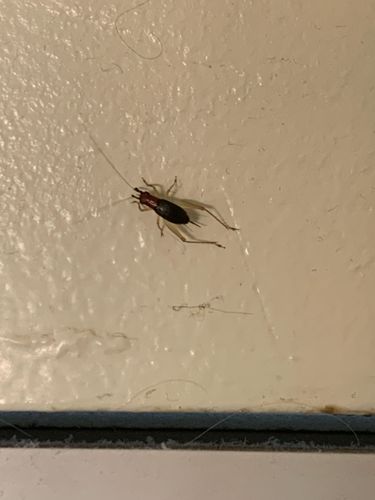Red-headed Bush Cricket
Scientific Name: Pteronemobius nigrovus
Order & Family: Orthoptera, Trigonidiidae (formerly Nemobiinae within Gryllidae)
Size: Approximately 7-10 mm (0.28-0.4 inches) in length.

Natural Habitat
Typically found in grassy areas, fields, gardens, and sometimes indoors, especially in damp environments like basements or bathrooms.
Diet & Feeding
Omnivorous, feeding on plant matter (leaves, stems, seeds), decaying organic material, small insects, and fungi. They can also feed on fabrics and paper products if they get into homes.
Behavior Patterns
Nocturnal, active at night. Males produce a chirping sound by rubbing their wings together to attract mates, though this species' call is generally soft and often inaudible to human ears. They are solitary but can appear in numbers if conditions are favorable. They have strong jumping legs. Life cycle involves egg, nymph, and adult stages, with nymphs resembling smaller versions of adults.
Risks & Benefits
Potential risks include being a nuisance pest indoors, as they can sometimes chew on fabrics, paper, or houseplant roots, though significant damage is rare. They do not pose health risks to humans. Benefits include being a food source for larger predators (birds, spiders, reptiles, amphibians) and contributing to decomposition by feeding on decaying organic matter.
Identified on: 9/4/2025